Advancing Agriculture: How Machine Learning is Shaping the Future of Smart Farming
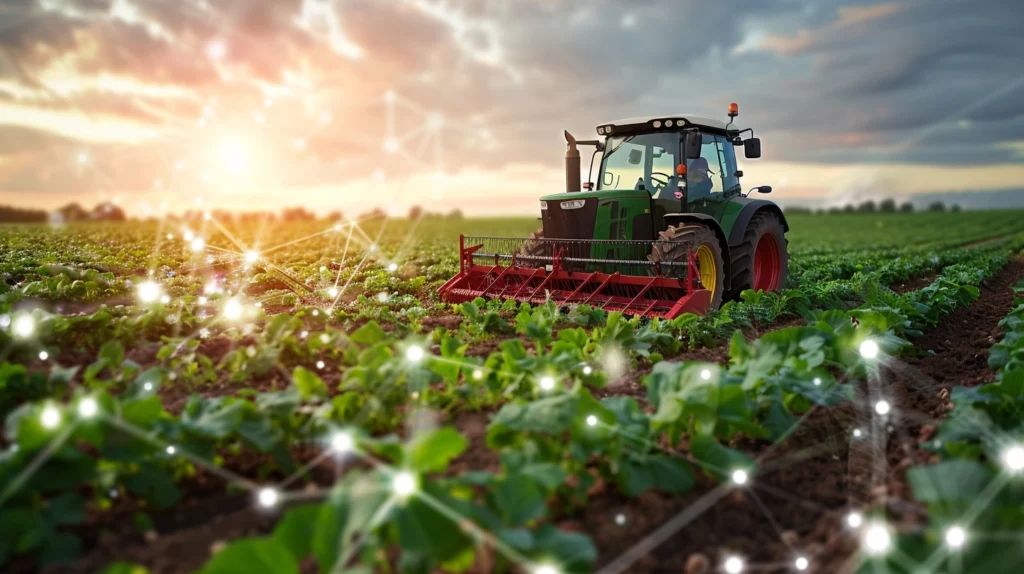
The agriculture sector faces numerous challenges, including unpredictable weather, pest infestations, and the need for sustainable practices, making it difficult for farmers to increase productivity and efficiency.
Traditional farming methods are often inefficient and can’t keep pace with the growing demand for food, leading to a gap between production and consumption.
Machine Learning in Agriculture represents the future of Smart Farming. By utilizing data analysis and predictive algorithms, machine learning enables the development of precision farming techniques. These innovations allow for better crop management, optimized resource use, and increased yields, heralding a new era of efficiency and sustainability in agriculture.
Key Takeaways
Embrace the future of agriculture with AI.
Use this prompt to tailor strategies that leverage machine learning for enhanced farming efficiency and sustainability.
Machine learning (ML) is revolutionizing agriculture, offering solutions to increase efficiency, reduce resource use, and enhance crop yields. Through predictive analytics, precision farming, and automated decision-making, ML enables farmers to make more informed choices, leading to sustainable farming practices and improved food security. Here's a customizable prompt to explore the application of machine learning in transforming agriculture into a smarter, more efficient industry:
### Customizable Prompt for Exploring Machine Learning in Agriculture
"How can [Agricultural Organization/Farm Name], looking to adopt smart farming practices, integrate machine learning technologies to optimize crop yield, manage resources more efficiently, and predict environmental impacts on farming activities? Consider the implementation of predictive analytics for weather and crop disease, precision agriculture techniques, and automation in resource management."
#### Areas to Explore:
1. **Predictive Analytics for Weather and Crop Disease**: How can ML models be developed to accurately predict weather patterns and potential crop diseases, allowing [Agricultural Organization/Farm Name] to take preemptive actions to protect crops?
2. **Precision Agriculture Techniques**: Discuss the role of ML in precision agriculture, including soil and crop health monitoring, to apply the exact amount of water, fertilizers, and pesticides needed, thereby reducing waste and environmental impact.
3. **Resource Management and Optimization**: Explore how ML can be used to automate and optimize irrigation, fertilization, and pest control, leading to more efficient use of resources and reduced costs.
4. **Yield Prediction and Crop Selection**: How can machine learning algorithms analyze historical data and current conditions to predict crop yields and advise on the best crops to plant in given conditions for maximum productivity?
5. **Drone and Satellite Imagery Analysis**: Discuss the use of ML in analyzing images from drones and satellites to monitor crop health, identify problem areas, and even predict yields on a large scale with high accuracy.
6. **Supply Chain and Demand Forecasting**: Explore how ML can improve the agricultural supply chain by predicting market demand, optimizing distribution routes, and reducing food waste through better planning.
### Guide for Use:
- Personalize the prompt by including specific details about your agricultural organization or farm, focusing on the aspects you wish to improve or innovate with machine learning.
- Use the insights generated to identify which machine learning technologies and applications can best address your agricultural challenges and objectives.
- Consider partnering with technology providers specializing in agricultural AI solutions or investing in developing in-house ML expertise.
- Regularly evaluate the impact of implemented ML solutions on your agricultural practices, making adjustments as needed based on performance data and evolving technologies.
Machine learning in agriculture offers a promising path toward increased productivity, sustainability, and resilience against environmental challenges, marking a significant step forward in the evolution of smart farming practices.The Role of Machine Learning in Smart Farming
In the area of smart farming, machine learning in agriculture plays a pivotal role, transforming traditional agricultural practices into a high-tech enterprise focused on efficiency and sustainability. The utilization of machine learning algorithms and applications in agriculture is not just a trend but a revolutionary shift that’s setting new standards for agricultural production and management.
Machine learning’s ability to analyze and interpret complex data from various sources, including satellite imagery, soil sensors, and weather forecasts, has made it an indispensable tool in precision agriculture. Here are several ways through which machine learning is making a mark in the agricultural sector:
- Predictive Analytics for Crop Health: By employing deep learning models and computer vision, ML systems can predict disease outbreaks and pest invasions with remarkable accuracy. This proactive approach allows farmers to apply treatments only where necessary, reducing costs and environmental impact.
- Yield Prediction and Resource Optimization: Machine learning models are adept at predicting crop yields, which helps in efficient resource allocation. Whether it’s water, fertilizers, or pesticides, machine learning ensures that these vital resources are utilized optimally, promoting sustainable agriculture.
- Machine Vision for Real-Time Monitoring: The application of machine vision in agriculture enables real-time monitoring and management of crops. Through advanced machine learning techniques, these systems can detect subtle changes in plant health that might be invisible to the human eye.
Below is a brief overview of the impact of machine learning on agricultural operations:
| Application | Impact |
|---|---|
| Predictive Analytics | Enhances pest and disease management through accurate predictions. |
| Yield Prediction | Improves farm planning and resource management with precise forecasts. |
| Resource Optimization | Ensures sustainable use of water, fertilizers, and pesticides. |
| Real-Time Monitoring | Promotes optimal crop health and yield with constant, data-driven supervision. |
Incorporating machine learning in agricultural systems not only drives economic benefits but also aligns with the goals of digital agriculture – to make farming more scientific, sustainable, and responsive to future challenges. Through the use of machine learning, farmers are able to achieve higher productivity, reduce the environmental footprint of farming practices, and pave the way for a more resilient agricultural sector.
IoT and Machine Learning in Crop Analysis and Prediction
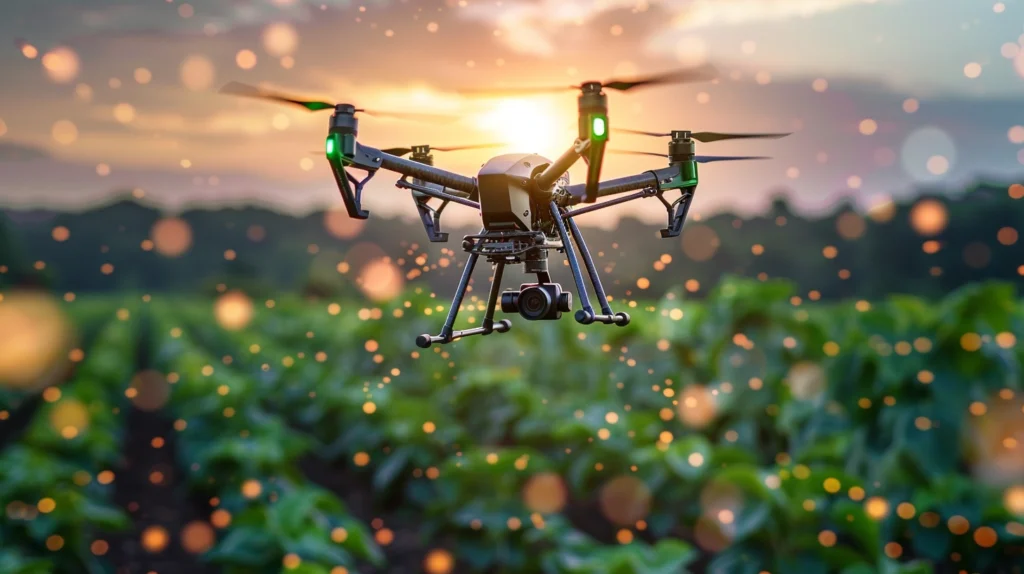
In the rapidly evolving field of agriculture, machine learning and IoT have become keystones in advancing precision agriculture. They are propelling agricultural operations towards more efficient and sustainable practices by harnessing the power of data.
Machine learning algorithms, including Neural Networks, Random Forest, Support Vector Machine (SVM), and Decision Trees, are at the forefront of this transformation. These algorithms analyze vast amounts of data from IoT devices deployed in the field. By examining climatic conditions, soil quality, and crop health in real-time, IoT and machine learning enable predictive analytics in agriculture. This leads to better decision-making and optimized agricultural productivity.
Application of Machine Learning and IoT in Agriculture
- Crop Disease Detection: Machine learning models, especially deep learning and computer vision, identify and predict crop diseases early, allowing for timely intervention.
- Yield Prediction: Combining IoT with machine learning techniques like ANN, Fuzzy Logic, and SVM has proven to be highly effective in predicting crop yields accurately.
- Irrigation Management: By analyzing weather data and soil moisture levels, machine learning helps in optimizing water usage, promoting water conservation in agricultural practices.
- Predictive Maintenance of Machinery: Leveraging data from agricultural machinery, machine learning can help in predictive maintenance, reducing downtime and extending equipment life.
| Field | Data |
|---|---|
| IoT in Agriculture Market Size | USD 78.85 billion by 2030 |
| AI in Agriculture Market Growth | USD 2.08 billion (2024) to USD 5.76 billion (2029) |
| Key ML Techniques | Neural Networks, SVM, Random Forest |
The integration of machine learning and IoT devices not only enhances agricultural production but also moves farming towards a more sustainable and data-driven future. As agriculture continues to digitize, the application of these technologies paves the way for innovative solutions to age-old problems, ensuring food security and the efficient use of resources.
Machine Learning for Crop Yield Prediction
In the sphere of agricultural production, the use of machine learning to enhance crop yield prediction stands out as both revolutionary and indispensable. Machine learning models, such as Artificial Neural Networks (ANNs) and Support Vector Machines (SVMs), have taken the lead in this arena, demonstrating remarkable capability in analyzing vast datasets gathered from IoT devices scattered across farms.
Key Machine Learning Algorithms in Agriculture
- Artificial Neural Networks (ANNs): Employed for their predictive capabilities and adaptive learning.
- Support Vector Machines (SVMs): Known for their effectiveness in classification problems, including disease detection.
- Random Forest: Offers reliable predictions by assessing numerous decision trees on various data subsets.
- LightGBM: An efficient ensemble learning method, enhancing corn yield predictions through its fast processing and accurate results.
The Impact of Machine Learning on Crop Management
The integration of machine learning in agriculture has underscored a transformative shift towards precision agriculture. By harnessing predictive analytics, farmers are now able to make informed decisions, so ensuring sustainable agriculture practices. The application of machine learning models facilitates:
- Early detection of crop diseases: Enabling timely intervention and reducing potential yield loss.
- Accurate yield prediction: Assisting farmers in planning and marketing their produce more effectively.
- Optimized irrigation management: Ensuring water is used judiciously, enhancing resource efficiency.
Notably, a recent study demonstrated the potential of deep learning models in predicting crop yields with high spatial resolution months before harvest, solely from globally available remote sensing data. This pivotal advancement showcases the power of machine learning applications in agriculture to leverage widely accessible data for advanced forecasting, thereby opening new frontiers for research and development in digital agriculture.
Benefits of AI in Agriculture
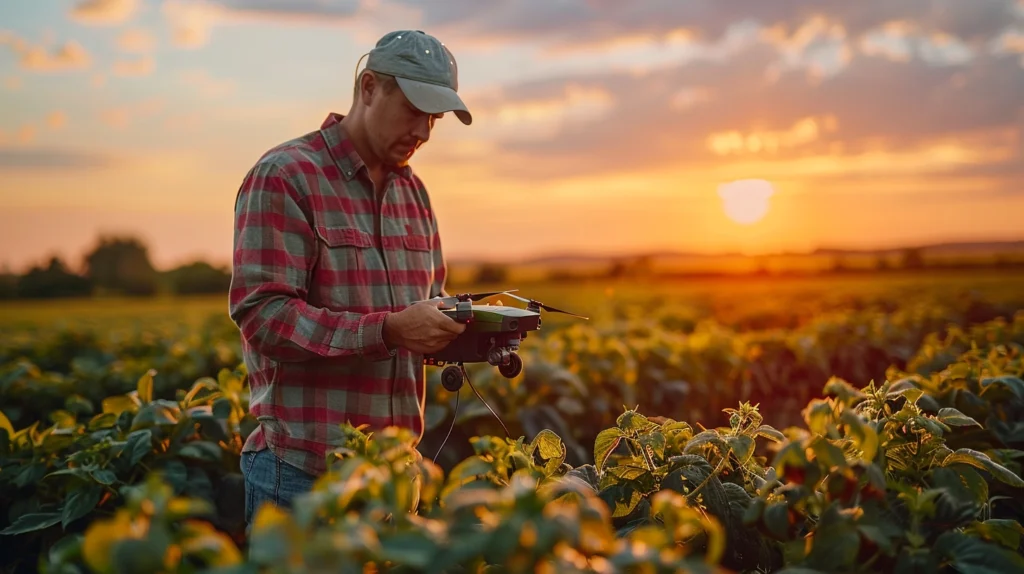
The integration of Artificial Intelligence (AI) and Machine Learning (ML) in agriculture is reinventing the way farmlands are managed. These technologies bring forth a myriad of benefits that not only enhance agricultural production but also pave the way for sustainable agriculture.
- Increased Efficiency: By implementing machine learning algorithms such as deep learning models and support vector machines, farmers can achieve up to a 20% increase in crop yields. This efficiency gain significantly reduces production costs while boosting profitability.
- Precision Agriculture: Machine learning techniques enable precision agriculture, where data-driven insights guide farming decisions. This approach ensures optimal use of resources, from water to fertilizers, contributing to a more sustainable and cost-effective operation.
- Predictive Analytics: One of the standout benefits of using machine learning in agriculture is the ability for predictive maintenance. These predictive models can forecast crop diseases, pest infestations, and weather impacts, allowing for preemptive measures that safeguard crop health and yield.
- Enhanced Decision Making: AI-driven virtual assistants and machine learning applications offer farmers real-time insights and recommendations. These tools support better decision-making, from selecting the right crops to optimizing harvest times.
Here’s a brief look at the economic impact of AI and ML in different regions:
| Region | Projected Market Size (2032) | CAGR |
|---|---|---|
| Global | USD 11.13 billion | 23.3% |
| North America | USD 5 billion | – |
| India | USD 90 billion (agriculture sector) | – |
These figures underscore the profound implications of AI and ML applications in transforming agricultural practices across the globe.
Besides, the application of machine learning in agriculture extends beyond traditional farming operations. It encompasses digital agriculture, where IoT devices and machine vision play a crucial role in real-time monitoring and management of agricultural activities.
Applications of AI in Agriculture
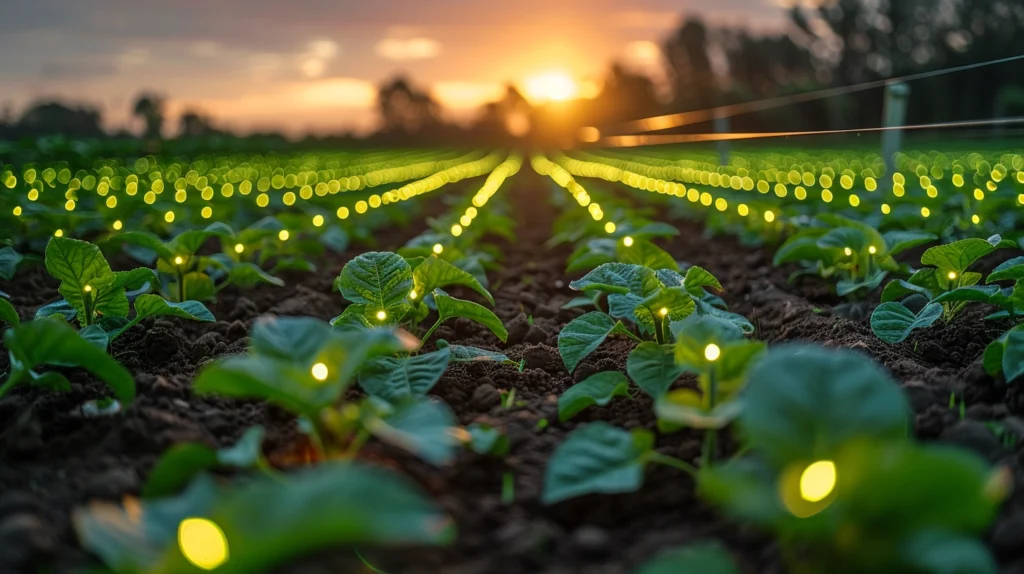
The intersection of Artificial Intelligence (AI) and agriculture is transforming the world of digital agriculture, paving the way for sustainable agricultural practices. Machine learning, a subset of AI, plays a crucial role in this transformation, offering innovative solutions to enhance agricultural production and efficiency. Here are some of the key applications where machine learning in agriculture has made significant strides:
- Precision Agriculture:
- Machine learning algorithms, including deep learning and support vector machines, are at the heart of precision agriculture. These technologies enable predictive analytics, helping farmers make data-driven decisions.
- The use of machine learning for soil health monitoring can reduce fertilizer usage by 10%, optimizing resource utilization and promoting sustainable agriculture.
- Pest Detection and Control:
- Computer vision, a technology powered by deep learning models, allows for accurate detection of pests and diseases, reducing pesticide use by up to 90% and enhancing crop health.
- Irrigation and Water Management:
- Machine learning applications in agriculture enable smart irrigation systems. By analyzing data on soil moisture levels, weather conditions, and crop types, these systems can cut water usage by 25%, supporting efficient water management practices.
- Yield Prediction and Crop Monitoring:
- Advanced machine learning methods are employed for real-time crop monitoring and yield prediction. AI-driven tools have been proven to improve yield prediction accuracy by up to 50% over traditional methods, ensuring better planning and resource allocation.
- Machine learning-based crop monitoring systems boast an accuracy rate of over 95% in identifying crop diseases, proving to be more effective than conventional diagnostic techniques.
The integration of machine learning in agricultural operations not only fosters economic growth but also propels the industry towards sustainable and efficient farming practices. By leveraging machine learning techniques, farmers are able to enhance productivity, reduce environmental impact, and optimize agricultural operations, marking a significant step forward in the journey towards digital agriculture.
Machine Learning Techniques in Agriculture
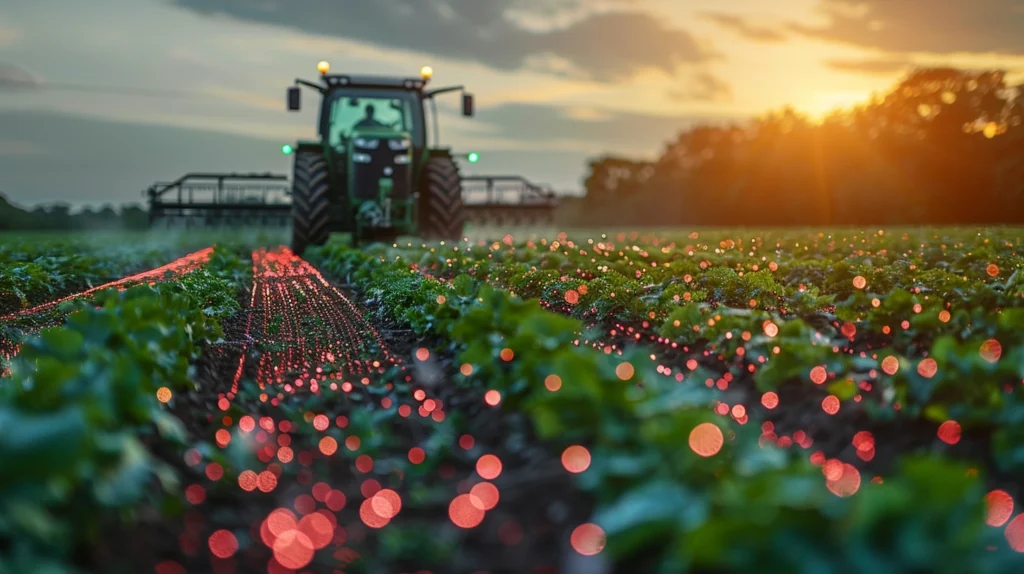
The integration of machine learning in agriculture is revolutionizing how farmers and agricultural professionals approach cultivation, harvesting, and overall farm management. By leveraging machine learning algorithms and deep learning models, the agricultural sector is witnessing significant advancements in efficiency, productivity, and sustainability.
Predictive Analytics and Crop Yield Forecasting
One of the standout applications of machine learning in agriculture is in predictive analytics for crop yield forecasting. Utilizing data-driven models, farmers can now anticipate crop performance with remarkable accuracy. These insights empower them to make informed decisions about planting schedules, crop rotation, and resource allocation.
- Machine learning models like Convolutional Neural Networks (CNN) achieve accuracy rates of up to 99.59% in identifying crop diseases.
- Predictive capabilities ensure optimal yield and reduced resource waste, contributing to sustainable agriculture practices.
Water Management and Resource Conservation
Machine learning also plays a crucial role in irrigation management, exemplifying its capability to foster resource conservation. Through precise monitoring and analysis of soil moisture levels, ML-based systems provide tailored irrigation recommendations, leading to water savings of approximately 10% for growers.
- The application of machine learning techniques in water management exemplifies the move towards digital agriculture.
Pest and Weed Control
Pest detection and management benefit from machine learning as well. The use of image recognition algorithms helps in accurately identifying pests across vast datasets. This machine learning application is vital in executing timely and effective pest management strategies.
- ML techniques have processed over 75,000 images across 102 categories, significantly aiding in pest classification.
Besides, the efficiency of weed detection has seen substantial improvement. Reducing the spread of herbicides not only diminishes the environmental impact but also lowers operational costs.
Enhancing Soil Health Monitoring
The introduction of machine learning in soil health monitoring has brought about a paradigm shift in how soil properties are analyzed. Detailed soil analysis supports the implementation of precision agriculture, a cornerstone for sustainable farming methods.
- Enhanced soil monitoring aids in maintaining the balance of essential nutrients, so optimizing the conditions for crop growth.
Deep Learning in Agriculture
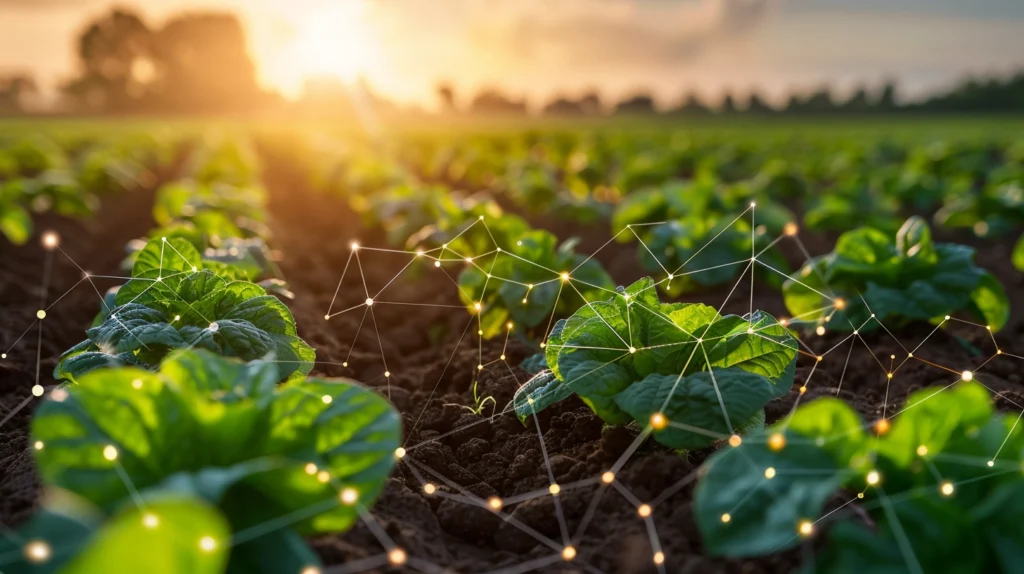
Deep learning, a subset of machine learning, is transforming the face of agricultural operations, offering unprecedented accuracy and efficiency in addressing myriad challenges. By harnessing deep neural network capabilities, agricultural production is not just maximizing yield but also steering towards sustainable agriculture.
Impact of Deep Learning on Agriculture
- Yield Improvement: Farms leveraging deep learning have seen an incredible 20% increase in yield. This surge is attributed to the technology’s ability to analyze vast amounts of data, improving decision-making and crop management.
- Pest Detection and Management: Deep learning models boast an impressive 95% accuracy in pest detection. This precision significantly reduces crop losses, ensuring that farms remain productive and profitable.
- Water Usage Efficiency: By integrating deep learning in irrigation systems, farms have witnessed a 30% reduction in water usage. This efficiency is crucial for sustainable resource management, particularly in regions grappling with water scarcity.
- Operational Cost Savings: On average, farms that adopt deep learning technologies report a 25% decrease in operational costs. These savings stem from optimized resource use and a reduction in manual labor, showcasing the financial viability of deep learning in agriculture.
Adoption and Growth
The adoption of deep learning in agriculture is on a steady incline. By 2024, it’s estimated that 65% of large-scale farms in developed countries will use deep learning technologies to enhance their farming practices. This surge is underpinned by the considerable benefits deep learning offers, from yield improvement to cost reduction. Besides, the market for deep learning in agriculture is projected to grow at a CAGR of 22% from 2024 to 2030, indicating a bright future for AI-driven solutions in farming.
Farmers, too, are recognizing the potential of deep learning, with 40% of small to medium-sized farms contemplating its adoption within the next five years. This broadening interest underscores the technology’s relevance across different scales of farming operations.
Time Series Analysis for Crop Yield Prediction
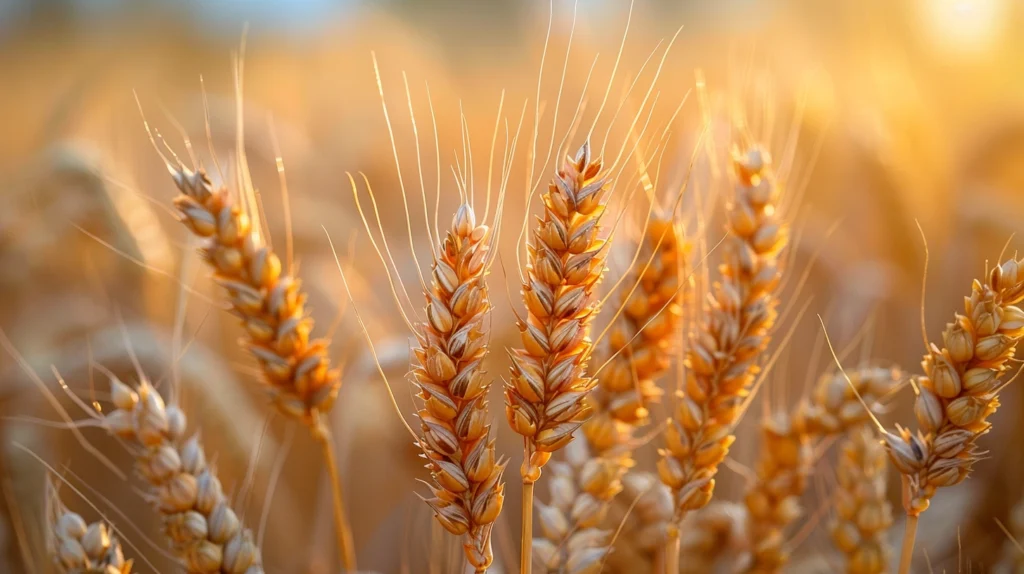
Time series analysis is a critical technique in predicting crop yields. By studying historical data and leveraging methods like Autoregressive Integrated Moving Average (ARIMA), farmers can identify patterns and trends that enable them to forecast future crop yields.
This analysis helps farmers anticipate changes in production, plan resource allocation effectively, and optimize planting and harvesting times. By understanding the fluctuations in crop yield over time, farmers can make informed decisions that maximize productivity and optimize crop management practices.
Autoregressive Integrated Moving Average (ARIMA)
ARIMA is an advanced statistical method commonly used in time series analysis for crop yield prediction. It combines three key components:
- Autoregression (AR): This component refers to the relationship between a specific observation and a certain number of previous observations. It helps identify patterns and dependencies in the data.
- Differencing (I): Differencing involves transforming the data to ensure stationarity, which simplifies the analysis. It removes trends and seasonality, allowing for more accurate predictions.
- Moving Average (MA): This component takes into account the dependency between an observation and a residual error from a moving average model. It helps account for random fluctuations in the data.
By combining these components, ARIMA models can capture both short-term and long-term patterns in the time series data, enabling accurate crop yield predictions.
Table: Comparison of Crop Yield Predictions using ARIMA
| Year | Actual Yield (tons/ha) | Predicted Yield (tons/ha) |
|---|---|---|
| 2016 | 4.5 | 4.3 |
| 2017 | 4.2 | 4.4 |
| 2018 | 3.8 | 3.9 |
| 2019 | 4.1 | 4.0 |
| 2020 | 3.9 | 3.8 |
ARIMA predictions provide valuable insights into crop yield trends and deviations from actual values. Farmers can use this information to adjust their farming practices, optimize resource allocation, and implement proactive strategies for efficient crop management.
The Future of Machine Learning in Agriculture
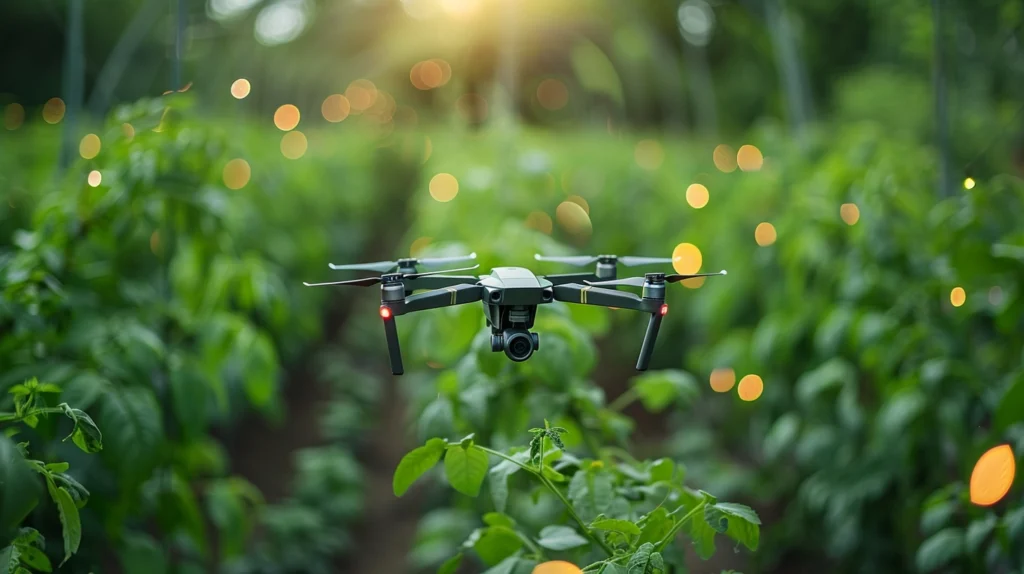
The integration of machine learning in agriculture represents a turning point in how we approach agricultural production and sustainable agriculture. As technology advances, the use of machine learning and deep learning models is not just a trend but a crucial element in shaping the future of farming. Here’s how:
- Predictive Analytics for Crop Yields: Machine learning models have revolutionized precision agriculture by providing over 90% accuracy in crop yield predictions. These machine learning algorithms analyze historical yield data and current season weather conditions, offering farmers actionable insights to optimize their harvests.
- Computer Vision for Pest and Disease Control: With accuracy rates exceeding 95%, computer vision and convolutional neural networks (CNNs) are at the forefront of pest detection and disease identification in crops. This machine learning application not only promotes healthier crop growth but also reduces pesticide use, contributing to environmental sustainability.
- AI-Driven Soil and Irrigation Management: Machine learning applications in agriculture extend to soil monitoring and irrigation optimization. AI-driven tools can predict soil quality and optimize water usage, ensuring crop health while conserving resources. These innovations represent a leap forward in digital agriculture, offering up to 80% cost savings on traditional methods.
- Enhancing Labor Efficiency and Sustainability: The application of machine learning and AI in agriculture addresses labor shortages and aims for higher sustainability. Innovations such as autonomous tractors and drones reduce manual labor needs by up to 40%, while machine learning techniques can also help reduce greenhouse gas emissions from agricultural operations by up to 20%.
The application of ML in agriculture is vast, encompassing everything from predictive maintenance of farm machinery to the development of virtual assistants for better farm management. With a focus on ensemble learning, transfer learning, and supervised learning, the agricultural sector is set to become more productive, sustainable, and resilient. The future of farming lies in harnessing machine learning applications to make smart, data-driven decisions, significantly enhancing both yield and environmental health.
Launching an AI-Driven Side Hustle in Agriculture
As we stand on the brink of a transformative era in farming, driven by artificial intelligence (AI), the potential for entrepreneurial ventures within agriculture is immense. With the global AI in agriculture market projected to grow from USD 1.5 billion in 2023 to USD 2.4 billion by 2025, the opportunity for innovative side hustles has never been greater. Here’s a refined approach to diving into this promising venture:
Seizing Market Opportunities
- Understanding Market Dynamics: With the AI in agriculture sector experiencing rapid growth, identifying niches that cater to crop management—the largest application area of AI, comprising 61% of the market—presents a lucrative entry point. This domain encompasses crop monitoring, disease detection, and yield optimization, offering a broad spectrum of opportunities for innovation.
- Leveraging Precision Farming: With 35% of farms already adopting precision farming techniques, integrating AI and machine learning to enhance farm management and practices reveals a high demand for technologies that streamline agricultural operations and boost efficiency.
Enhancing Agricultural Productivity
- Boosting Crop Yields: The application of machine learning in agriculture promises an increase in crop yields by 20-30%. Entrepreneurs can develop AI solutions that utilize predictive analytics and decision-making tools to support farmers in achieving optimal production levels.
- Revolutionizing Pest Control: Addressing the challenge of up to 40% of global crop losses due to pests, AI-driven pest control solutions can drastically reduce these losses. Innovations in early detection and management strategies are not only beneficial for crop preservation but also for securing the food supply chain.
Attracting Investments and Increasing Earnings
- Capitalizing on Startup Success: The success of AI agriculture startups, such as Gro Intelligence, which raised $117.6 million, underscores the investment community’s confidence in AI-driven agricultural innovations. Entrepreneurs should position their ventures to attract funding by demonstrating scalability, impact, and a clear path to profitability.
- Improving Labor Efficiency: AI technologies offer the promise of automating labor-intensive tasks like weed detection and harvesting. This not only addresses labor shortages but also opens up avenues for service-based side hustles, such as data annotation for agricultural AI, where startups have reported earnings of $4-5k a month.
Developing and Marketing AI Solutions
- Targeted AI Development: Focus on creating AI tools and platforms that cater specifically to identified needs within the crop management and precision farming domains. Collaborate with agricultural experts to ensure that your solutions are viable and address real-world challenges.
- Strategic Marketing and Outreach: Employ targeted marketing strategies to reach your ideal customer base, highlighting the benefits of your AI solutions through case studies and success stories. Engage in educational outreach to raise awareness about the potential of AI to revolutionize farming practices.
Scaling for the Future
- Continuous Innovation and Adaptation: Stay abreast of the latest advancements in AI and machine learning to continually refine your offerings. The agricultural sector’s needs are ever-evolving, and staying ahead of technology trends will ensure your side hustle remains relevant and competitive.
- Sustainability at the Core: In developing your AI solutions, prioritize sustainability and efficiency. The global shift towards sustainable farming practices offers a unique proposition for AI innovations that contribute to resource conservation and environmental protection.
The intersection of AI and agriculture holds vast potential for entrepreneurs to launch side hustles that not only generate significant income but also contribute to the advancement of sustainable and efficient farming practices worldwide. By tapping into the growing market, addressing key challenges, and leveraging the latest technologies, your AI-driven venture can flourish in this exciting sector.
Frequently Asked Questions
How is machine learning revolutionizing agriculture?
Machine learning is revolutionizing agriculture by increasing productivity and sustainability through accurate predictions of crop yields, pest detection, and disease identification. This leads to optimized harvests, reduced pesticide use, and improved soil monitoring and irrigation management.
Can machine learning help in reducing pesticide use in farming?
Yes, machine learning aids in reducing pesticide use by accurately detecting pests and diseases, allowing farmers to apply pesticides more selectively and efficiently, thereby minimizing the overall use of these chemicals.
What benefits do AI-driven tools offer in agriculture?
AI-driven tools in agriculture offer several benefits including enhanced soil monitoring, improved irrigation management, and increased labor efficiency. These benefits contribute to significant cost savings and advance environmental sustainability by optimizing resource use.
How does machine learning contribute to cost savings in agriculture?
Machine learning contributes to cost savings in agriculture by optimizing harvests, reducing pesticide use through accurate pest and disease detection, and enhancing soil monitoring and irrigation management. These efficiencies reduce waste and resource costs.
What is the future of machine learning in agriculture?
The future of machine learning in agriculture lies in leveraging advanced applications like ensemble learning and supervised learning to make data-driven decisions. This approach will further boost crop yield and improve environmental health, marking a significant shift towards highly efficient and sustainable farming practices.
References:
- Towards leveraging the role of machine learning and artificial intelligence in precision agriculture and smart farming. ScienceDirect.
- Smart farming using artificial intelligence: A review. ScienceDirect.
- Machine learning applications in IoT based agriculture and smart farming: A review. IJEAST.
- An IoT based smart farming system using machine learning. IEEE Xplore.
- Affordable smart farming using IoT and machine learning algorithms. IEEE Xplore.
